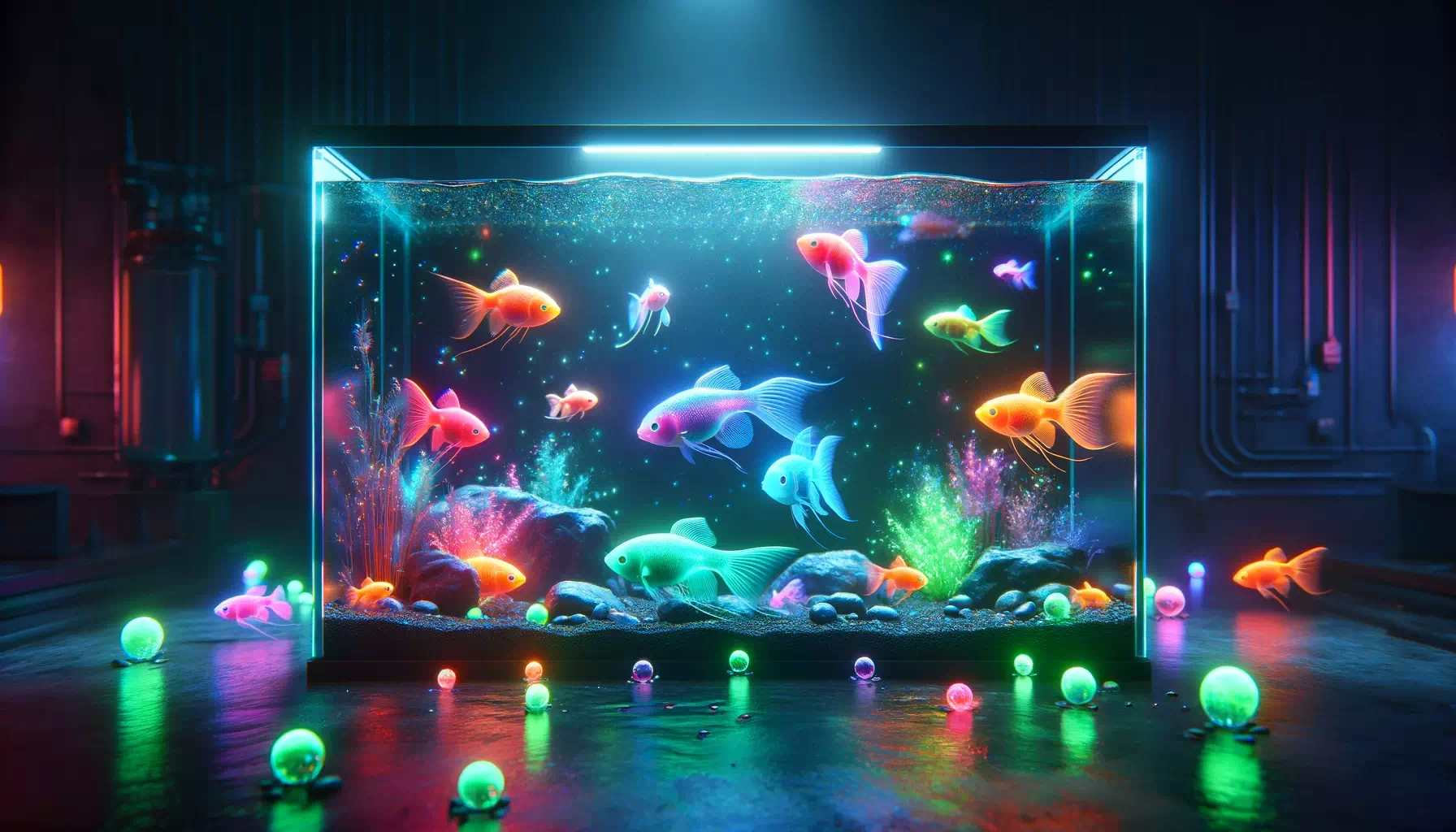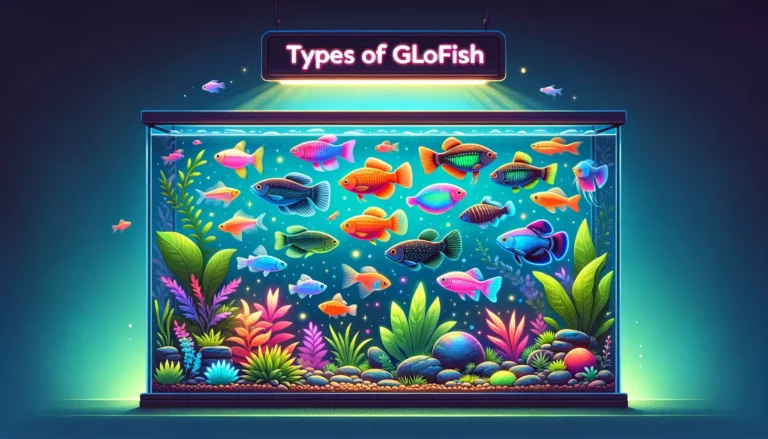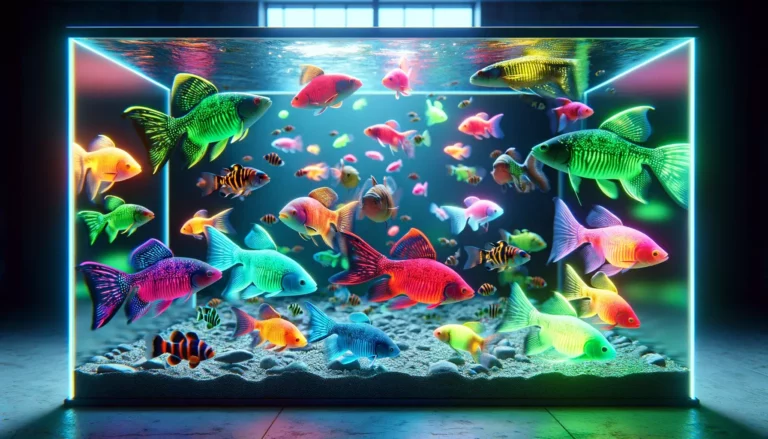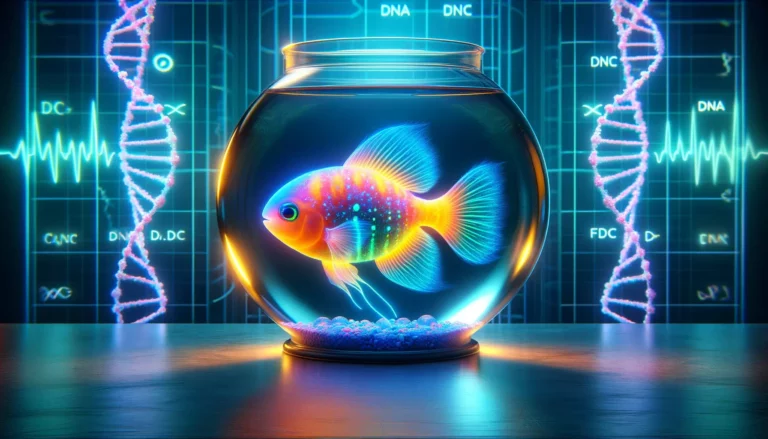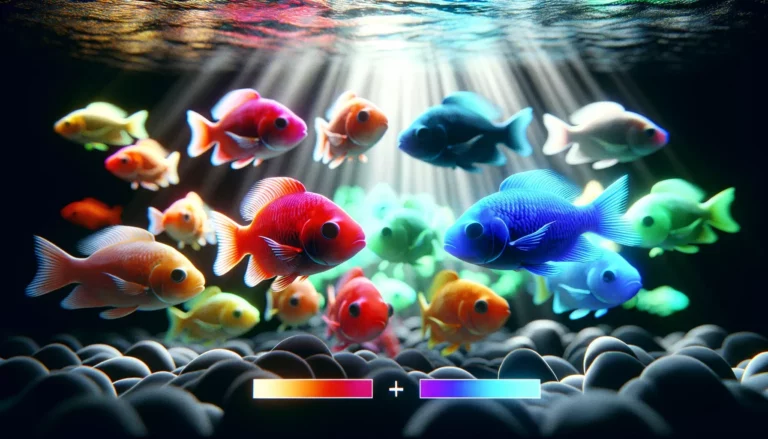Can GloFish Pass On Their Luminescent Properties to Offspring?
GloFish are extraordinary creatures. These fish stand out due to their vibrant colors. Biotechnology brings this vividness to life. Fluorescent genes get inserted into their DNA. This process causes them to glow. They shine under specific light conditions. This trait makes them popular in aquariums.
GloFish come in various dazzling colors. Red, green, blue, purple, and orange hues are common. These colors are not just for show. They serve a purpose in scientific research. Originally, the glowing trait helped in studying environmental pollution. Now, these fish are beloved pets. They bring a glowing spectacle to home aquariums.
Their care is similar to regular fish. GloFish need proper tanks, food, and clean water. They thrive in groups, enjoying company. Their vibrant glow comes from within. They carry a gene from naturally bioluminescent organisms. This gene is responsible for their unique shine.
Can GloFish Pass This Trait to Their Offspring?
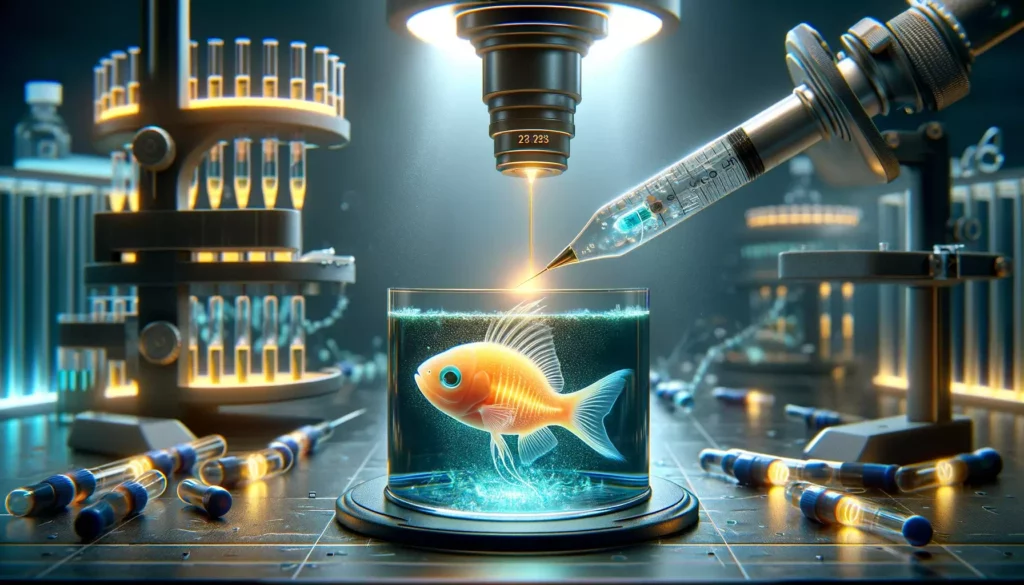
The glowing trait of GloFish is inheritable. They can pass this trait to their offspring. This fact remains central to their breeding. The fluorescent gene integrates into their DNA. This integration ensures the trait’s passage through generations.
Breeding GloFish at home is not encouraged. Companies hold patents for the technology. They regulate the breeding and sale of these fish. Thus, breeding them independently could infringe on these rights.
In nature, traits pass from parents to offspring. GloFish follow this rule. If two GloFish mate, their young will likely glow. The exact color depends on the parents’ genes. The process mirrors regular inheritance patterns.
In summary, GloFish are not just pets. They are marvels of biotechnology. Their glowing appearance is not just beautiful. It’s a result of genetic modification. They carry this modification in their DNA. This allows them to pass the glowing trait to their young. Despite this, their breeding is under strict control. This is due to legal and ethical considerations.
Genetics of GloFish
GloFish glow due to specific genes. These genes come from bioluminescent organisms. Jellyfish and certain coral species are common donors. The green fluorescent protein (GFP) gene from jellyfish is a prime example. This gene is the secret behind their glow. It encodes a protein that fluoresces under certain light.
Other genes contribute to different colors. For example, the red fluorescent protein (RFP) gene. This gene comes from sea anemones. It makes GloFish radiate in red hues. These genes are not naturally in fish. They get inserted through genetic engineering.
Method of Introducing These Genes
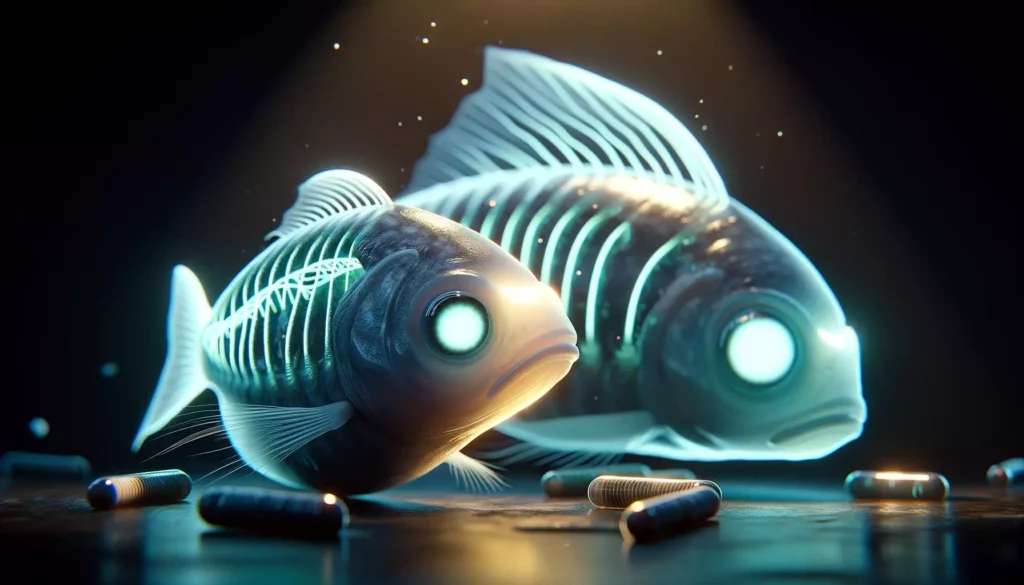
The process of creating GloFish is meticulous. It starts early in the fish’s life cycle. The chosen fluorescent gene gets inserted into the fish embryo. This is done before the fish fully develops. Microinjection is the primary method used.
In microinjection, a tiny needle delivers the gene directly into the embryo. This insertion happens at a specific stage. It ensures the gene integrates well into the fish’s DNA. Once integrated, the gene becomes a permanent part of the fish. It expresses itself in the fish’s coloration.
This process requires precision and expertise. It’s not a task for amateur breeders. Specialized laboratories carry it out. They ensure the gene integrates correctly. This precision is crucial. It ensures the fish will glow as intended.
In summary, GloFish owe their glow to genes from other organisms. These genes produce proteins that fluoresce. The process of inserting these genes is complex. It involves injecting the gene into fish embryos. This process guarantees that the glowing trait is present from birth. It becomes a natural part of the fish’s appearance.
Transmission of Genetic Traits
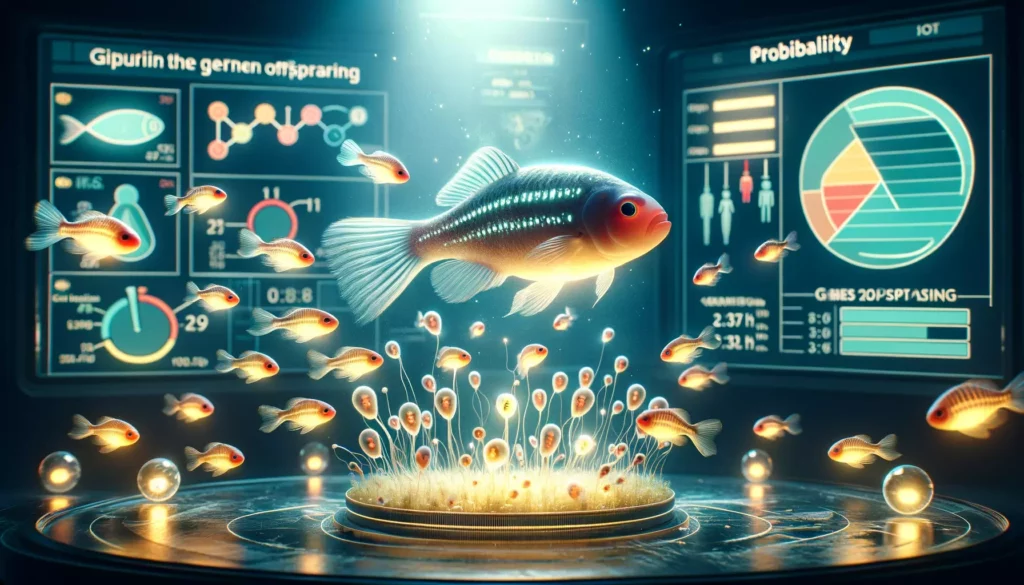
The process of transmitting genetic traits is foundational to life. It follows the principles of inheritance. Each parent contributes half of the genetic material to their offspring. This genetic material comes in the form of DNA. DNA carries the instructions for all traits.
Traits can be dominant or recessive. Dominant traits show up even if only one parent passes them down. Recessive traits require both parents to contribute the gene. The mix of genes from both parents determines the traits of the offspring. This mix includes physical features, behaviors, and, in the case of GloFish, glowing.
Specifics of Transmitting Glowing Genes
The glowing genes in GloFish behave like other genes. Once in the DNA, they follow regular inheritance patterns. If a GloFish has the glowing gene, it can pass it to its offspring. The glow becomes a heritable trait.
However, the glowing trait in GloFish is due to a specific genetic modification. It’s not a natural part of the fish’s DNA. This means the glowing trait’s inheritance might differ from natural traits. The trait’s expression depends on the gene’s dominance. It also depends on how well the gene integrates into the fish’s genome.
| Transmission of Glowing Genes in GloFish | Characteristics |
|---|---|
| Behavior of Glowing Genes | Follow regular inheritance patterns in DNA. |
| Heritability of the Glow Trait | Can be passed on to offspring as a heritable trait. |
| Nature of the Glowing Trait | Result of a specific genetic modification, not natural. |
| Expression of the Trait | Depends on gene dominance and integration into the fish’s genome. |
| Variation in Glow Intensity | Can lead to varying glow intensities in offspring. |
| Complex Inheritance Patterns | Patterns of inheritance can be intricate due to genetic modifications. |
Breeding GloFish can result in offspring with varying glow intensities. This variation depends on genetic factors. It also depends on how the inserted gene interacts with the fish’s natural genes. The specific patterns of inheritance can be complex. They involve understanding genetics deeply.
In summary, GloFish pass on their traits, including the ability to glow, through inheritance. The glowing trait comes from an inserted gene. Once part of the DNA, it behaves like other genes. Yet, the specifics of how it passes down can be intricate. It involves understanding how genetic modifications interact with natural genes.
Probability of Transmitting Glowing Traits

Not all offspring of GloFish will necessarily glow. This variation is due to genetics. The glowing trait’s inheritance follows Mendelian principles. But, the specifics depend on the gene’s nature. If the glowing gene is dominant, most offspring will likely glow. If it’s recessive, both parents must carry the gene for offspring to glow.
The integration site of the glowing gene matters. It can affect how the gene expresses itself. If the integration disrupts other genetic functions, it might not express consistently. This disruption can lead to variations in the offspring’s glow.
Influence of Parental Genotype on Glowing Trait Transmission
The genotype of GloFish parents is crucial. It determines the likelihood of glowing offspring. If both parents have a dominant glowing gene, the chance of glowing offspring is high. If one parent has the gene, the likelihood decreases.
| Parental Genotype | Likelihood of Glowing Offspring | Glow Intensity and Color Variation |
|---|---|---|
| Both parents dominant for glowing gene | High likelihood of glowing offspring | Variations in intensity and color due to other genes |
| One parent dominant for glowing gene | Lower likelihood of glowing offspring | Variations in intensity and color due to other genes |
| One parent dominant, one recessive/no glowing gene | Lower likelihood of glowing offspring | Variations in intensity and color due to other genes |
Consider two scenarios. In the first, both parents have the glowing gene dominantly. Here, most offspring will likely glow. In the second scenario, one parent has the dominant gene. The other has a recessive or no glowing gene. Here, the probability of glowing offspring is lower.
The glowing gene’s expression also depends on its interaction with other genes. This interaction can enhance or suppress the glowing trait. It leads to variations in the intensity and color of the glow.
In summary, not all GloFish offspring will glow. The probability depends on the parents’ genotypes. It also depends on how the glowing gene interacts with the fish’s DNA. These factors together determine the likelihood and expression of the glowing trait in offspring.
Selection and Breeding of GloFish
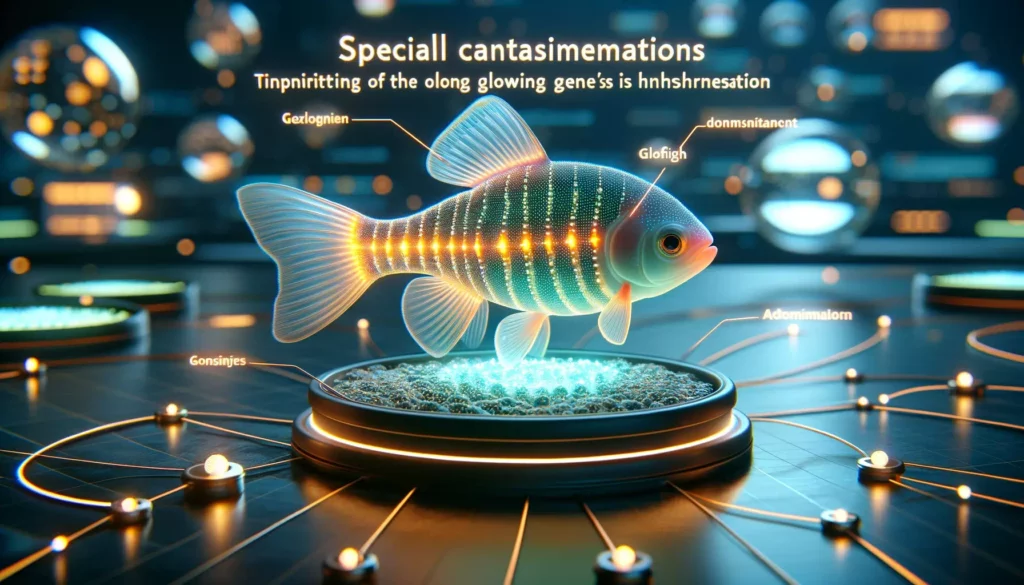
Selective breeding plays a crucial role in maintaining GloFish’s glowing traits. Breeders choose parents with strong, vibrant glows. This selection increases the chance of glowing offspring. It’s a way to ensure the trait remains prominent in the population.
Breeders also pay attention to the health of GloFish. Healthy fish are more likely to pass on their traits effectively. They monitor genetic diversity too. This diversity helps maintain a robust GloFish population. It reduces the risk of genetic issues from inbreeding.
Tips for GloFish Care to Maximize Glowing Trait Transmission
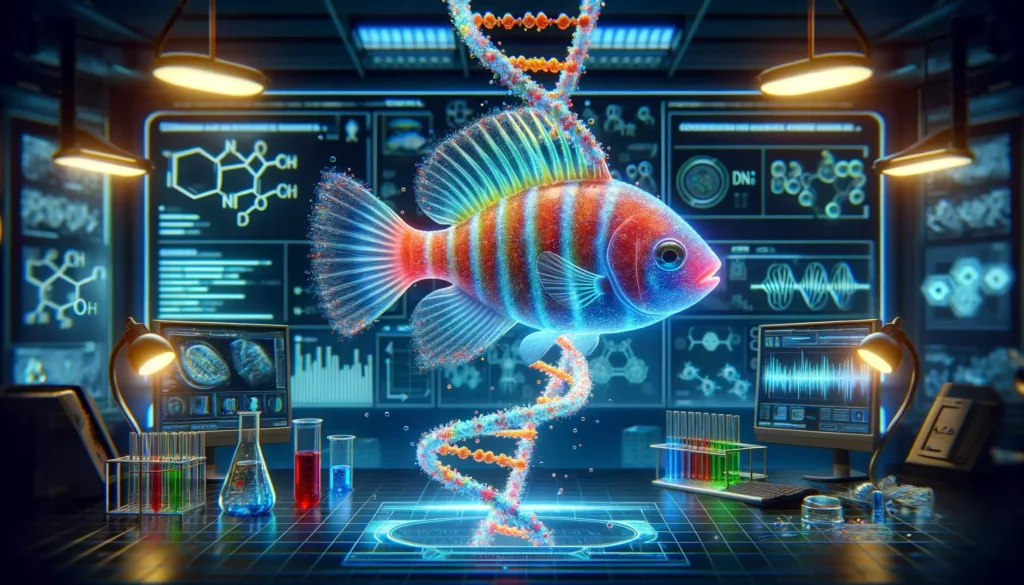
Caring for GloFish involves specific steps. These steps ensure their health. They also maximize the chance of passing on the glowing trait. Here are some tips:
- Provide a suitable environment. GloFish need clean, well-filtered water. The right pH and temperature are crucial. This environment reduces stress and promotes health.
- Ensure proper nutrition. Feed GloFish quality food. A balanced diet supports their overall health. It also enhances their glowing trait.
- Manage breeding carefully. Monitor the fish during breeding. Ensure the breeding pair is healthy. They should show strong glowing traits.
- Reduce stress. A stress-free environment promotes healthy breeding. Avoid overcrowding and aggressive tank mates. Offer hiding spots and a tranquil setting.
- Regular health checks. Monitor for signs of illness. Healthy parents are more likely to produce healthy, glowing offspring.
In summary, selective breeding is key in preserving GloFish’s glowing traits. Careful selection of parents ensures the trait’s continuation. Proper care and a supportive environment are crucial. They maximize the chances of glowing offspring. Attention to these details supports a vibrant GloFish population.
Conclusion
GloFish stand out in the world of aquarium pets. Their vibrant glow brings a unique beauty to tanks worldwide. They can indeed pass their glowing traits to their offspring. However, this transmission is not guaranteed. It depends on various genetic factors. The role of selective breeding is paramount. It ensures the continuation of these glowing traits.
Caring for GloFish and their offspring demands attention and dedication. It’s not just about maintaining their health. It’s also about preserving their distinctive glow. Proper tank conditions, nutrition, and stress management are crucial. These factors contribute to the well-being of GloFish. They also influence the successful transmission of their glowing traits.
In caring for GloFish, enthusiasts don’t just keep a pet. They become custodians of a fascinating blend of nature and biotechnology. The beauty of GloFish reminds us of the marvels of genetic science. Yet, it also calls for responsible breeding and care. It’s a commitment to nurturing not just the fish but also the extraordinary trait they carry. Let’s cherish and protect the radiant world of GloFish.

